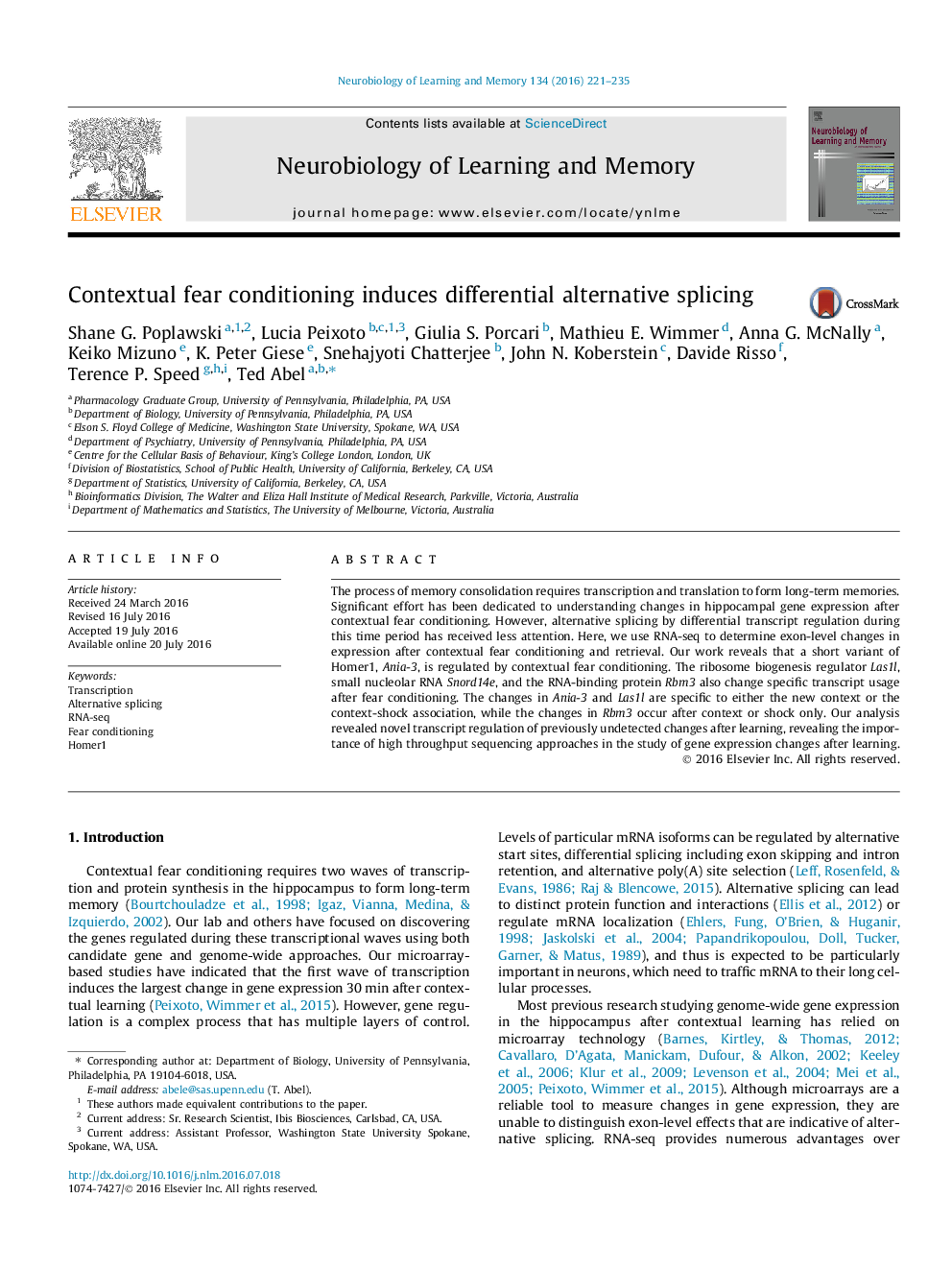| کد مقاله | کد نشریه | سال انتشار | مقاله انگلیسی | نسخه تمام متن |
|---|---|---|---|---|
| 5043266 | 1475140 | 2016 | 15 صفحه PDF | دانلود رایگان |
- A number of genes show alternative splicing during learning.
- Homer1 isoform Ania-3 is regulated by fear conditioning.
- Differential isoform usage can vary with shock only, context only, or fear conditioning.
The process of memory consolidation requires transcription and translation to form long-term memories. Significant effort has been dedicated to understanding changes in hippocampal gene expression after contextual fear conditioning. However, alternative splicing by differential transcript regulation during this time period has received less attention. Here, we use RNA-seq to determine exon-level changes in expression after contextual fear conditioning and retrieval. Our work reveals that a short variant of Homer1, Ania-3, is regulated by contextual fear conditioning. The ribosome biogenesis regulator Las1l, small nucleolar RNA Snord14e, and the RNA-binding protein Rbm3 also change specific transcript usage after fear conditioning. The changes in Ania-3 and Las1l are specific to either the new context or the context-shock association, while the changes in Rbm3 occur after context or shock only. Our analysis revealed novel transcript regulation of previously undetected changes after learning, revealing the importance of high throughput sequencing approaches in the study of gene expression changes after learning.
Journal: Neurobiology of Learning and Memory - Volume 134, Part B, October 2016, Pages 221-235
